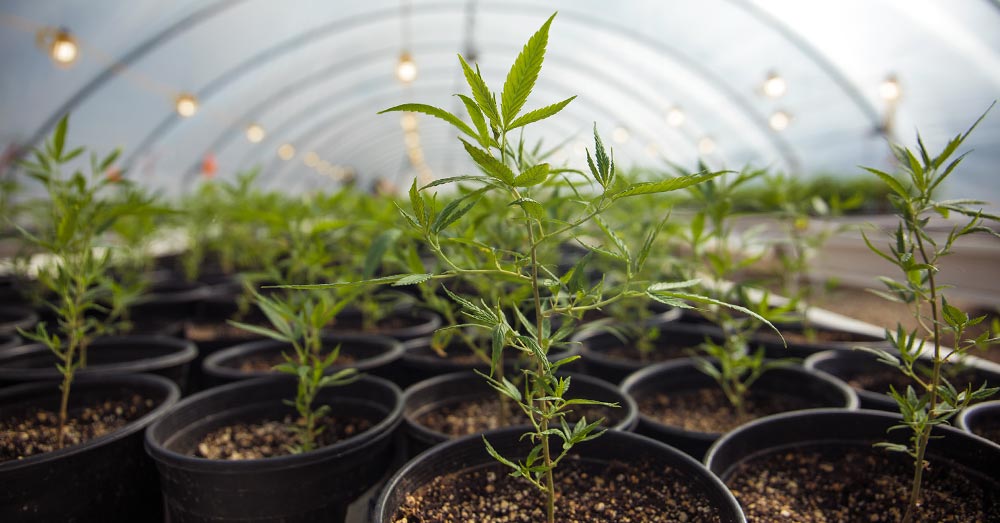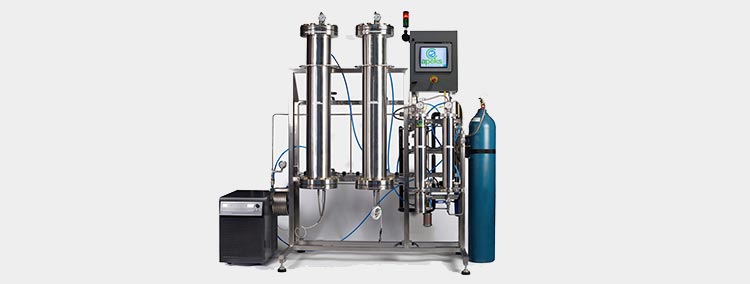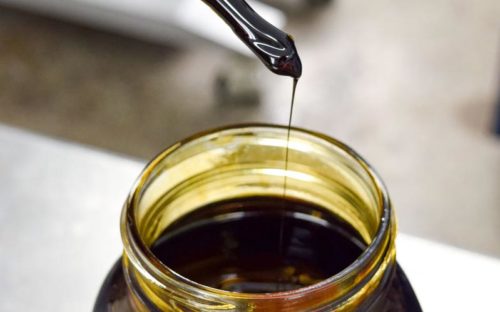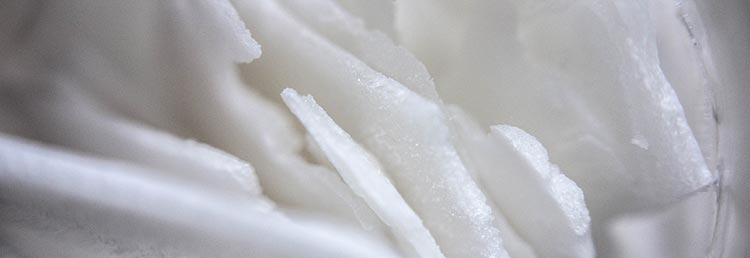 Shop
ShopBroad-Spectrum CBD Softgels
Broad-Spectrum CBD Oil Tincture
Full-Spectrum CBD Softgels
Full-Spectrum CBD Oil Tincture
CBD Gummies
CBD Balm
CBD Dog Treats
All Products >

Just like with the foods you eat, the quality of a CBD product starts at the farm. In this article, we take a look at the complete life cycle - from seed to plant to extract to the final product.
Keep reading and you'll learn about how cannabis is grown, processed, extracted, and finally packaged into the benefit-packed CBD oil you know and love.

The 2018 Farm Bill clearly defined hemp as a unique type of cannabis separate from marijuana. Hemp is cannabis containing 0.3% or less THC by dry weight. This definition lifts hemp out of the controlled substances act making hemp federally legal.
This step forward for the industry made CBD products extracted from hemp legal to possess, sell, and even travel across state lines with. Today a quality CBD product starts with organically grown, non-GMO, domestic hemp plants.
These plants are selectively bred to be high in CBD and other minor cannabinoids and terpenes while remaining under the legal limit in THC. The goal is to create a crop rich in these valuable compounds that will ultimately be extracted into an oil and used to create the final product.
Note: while hemp is the primary source for non-psychoactive CBD products is possible to find high-CBD products extracted from marijuana. The difference is that these products are not recognized as federally legal. This is because they contain THC levels above that of the hemp definition and thus they must be sold through recreational or medicinal dispensaries.
After the flowering tops of these hemp plants have been harvested, the next step is to pull the valuable cannabis compounds from the plant into an oil called a crude extract. This is accomplished through a process called extraction. There are many different approaches, but the general idea is to pass a solvent through dried plant material in order to separate out the active compounds.
Once extracted, the result is a dark oil which is called 'crude' because it contains the sought after cannabinoids and terpenes as well as other plant compounds like chlorophyll and fatty acids. This crude oil is usually processed further before making its way into a final product.
The following extraction methods are all commonly used to create the various spectrums of CBD oil extracts found on the market today. Each method carries limitations and benefits which we cover below:

CO2 extraction is widely considered to be a fantastic method used to create CBD-rich extracts. This extraction method puts carbon dioxide under high pressure while maintaining a low temperature. The gas is transformed into a liquid due to the pressure and then passed through the plant material with up to a 90% extraction efficiency.
The resulting extract a highly concentrated and pure extract. This process is top of the line as it requires expensive equipment and experienced operators. The resulting oil often needs less post-processing than other types of extraction.
Check out the following video for an example of how this extraction method works:

This extraction method utilizes an alcohol solvent - most commonly ethanol. Ethanol is 'Generally Regarded as Safe (GRAS)' by the FDA. It is commonly used as a food preservative and additive found in many products at the grocery store.
Ethanol is a polar solvent which means it will mix with water and dissolve water-soluble molecules in addition to the desired cannabis compounds. Chlorophyll is one of the compounds that ethanol will co-extract along with the cannabinoid filled oil. The result is a dark-colored oil with a bitter and grassy flavor.
The chlorophyll can be removed from the oil using post-extraction filtering methods, but the process can also remove some of the cannabinoids resulting in a lower quality CBD oil product. Some ethanol extractors cite that the water-soluble component extraction can be mitigated by using cold extraction temperatures.
When compared to CO2 extraction, ethanol extraction is a lower-cost method, but still used by many leading companies on the market today. Despite the lower cost, this extraction method can still be used to create high-quality extracts though it may require more expertise and post-extraction processing.
Assuming an experienced operator, the result of this extraction method can be very favorable, even comparable to CO2 extraction in quality. That being said, with a less experienced extractor, there is more room for error and possibility for solvent contamination or lower quality end product.
This early extraction method was created using a light hydrocarbon solvent like to extract cannabis oil. Commonly butane, pentane, propane, hexane, isopropyl alcohol, or acetone are used as solvents. These hydrocarbons have a low boiling point and can be easily used to extract CBD oil.
This cheap and easy method of extraction comes with a variety of issues that make it non-ideal. The resulting oil usually contains a lower concentration of terpenes and cannabinoids like CBD and a higher concentration of THC. There is also unsafe residue that can remain that may interfere with immune function. This extraction method proved to be both dangerous and inefficient and is thus rarely used by commercial CBD companies today.
One of the lesser-used extraction methods is called lipid extraction. This method uses the fats, or “lipids”, to absorb and encapsulate the hemp-produced compounds. Often organic coconut oil is used in this extraction process. Lipid extraction does not require the use of any harsh solvents or CO2. It is not a popular method of extraction, though you may find some boutique companies using it.
The naturally occurring phytocannabinoids found growing on the cannabis plant actually come in acid or 'raw' form. In order to 'activate' the acid forms and transition them into the sought after cannabinoids, they must undergo a heating process called decarboxylation.
Though it sounds fancy, decarboxylation is simply applying heat to an extract. Through this heating process, the acid molecule is removed and the active compound is produced. For example, decarbing hemp transitions the naturally occurring CBDA (Cannabidiolic acid) into CBD. This process can be performed either before or after extraction.
Despite being less popular, the 'raw' molecules are showing promise as they interact with the body differently than the 'activated' or non-acid forms of these same substances. For example, THCA is non-psychoactive, while THC is psychoactive.
This is driving some companies to include the acid forms of these cannabinoids in addition to the activated non-acid forms. With that being said, unless specifically outlined as a 'raw' product, all CBD products on the market have been decarboxylated to activate the compounds.
The high pressure and/or high temperatures in the initial extraction process brings with it a wide range of fatty acids, plant materials, chlorophyll, cannabinoids, and terpenoids from the plant material. This crude extract is dark, resembling molasses. There are some additional, optional steps that help strip away unwanted material in order to produce a cleaner final product.

Winterization works to further purify the extract and remove the unwanted components. This process is essential for almost all crude extracts unless the extract was created using low-temp ethanol extraction.
The process of winterizing consists of completely mixing the CBD extract in 200 proof alcohol and freezing it overnight. In the morning the cloudy mixture is ready for filtration. This process is done by running it through a paper filter into an extraction jar.
The alcohol is removed from the filtered end product through warming until it evaporates. This is made possible because the alcohol has a lower boiling point than the oil. The result is a full-spectrum extract free of unwanted plant materials like chlorophyll but still rich in cannabinoids and terpenes.
Following the process up to this point will create a usable extract containing a full profile of terpenes and cannabinoids. There is a demand for alternatives to full-spectrum products. For example, many pharmaceutical preparations prefer to use the isolated CBD compound. Consumer demand has also pushed for extracts free from THC.

Today you'll find CBD isolate widely on the market. These isolates are a crystalline white powder comprised of 99%+ cannabidiol. All other cannabinoids, terpenes, plant materials, oil, and chlorophyll is removed in the creation of this powder. The remaining CBD crystals that carry no odor or flavor and are versatile in their use.
The most common method of creating an isolate is using short path distillation to separate and capture the individual compounds in the extract.
Consumers often find CBD isolate attractive because it is THC-free. You should understand that while isolate is versatile, products based on this type of extract are not as effective as an oil containing a full or broad-spectrum cannabinoid profile.
Broad-spectrum products were born from consumer demand for a THC-free alternative to CBD isolate that didn't suffer from the downsides of the single-molecule formula. The single-cannabinoid profile is less effective due to the lack of cannabinoid and terpene synergies known as the entourage effect.
Broad-spectrum extracts utilize chromatography to remove just the THC from an extract. This is done by pushing the extract through a column filled with special media. The THC selectively binds to the media and the rest of the extract pushes through the column. The resulting extract is rich in cannabinoids and terpenes but free from THC.

Once an extract has been created and processed to the desired point, it's ready to be used in a final product. The types of products containing CBD stretches far and wide including applications like tinctures, capsules, food products, and topicals.
Here at Big Sky Botanicals, we produce both full and broad-spectrum products. Our broad-spectrum line contains a variety of cannabinoids and terpenes with only the THC removed. We accomplish this by extracting our organically grown Colorado hemp via CO2 or ethanol extraction before processing it and ultimately using chromatography to remove the THC to create a true broad-spectrum profile.
We outline in detail how our products are made showing the extraction and processing methods we use to craft the high-quality extracts used in our products.
This is a really great guide to cannabis extraction. I like how it compares all the different methods and gives a good overview of the process. Knowledge is power. Thanks again for the great article!
Amazing understanding of the process of the plant
After making a CBD extraction using the female plant, is there further extraction one can do to isolate other compounds such as THC or would the remainder of the material just get tossed out?
Further processing of the extract is common. Usually, in the CBD industry, the CBD is isolated or the THC is removed. You can learn more about these topics in these articles on distillation and chromatography:
https://bigskybotanicals.com/blog/chromatography-and-the-cbd-industry/
https://bigskybotanicals.com/blog/what-is-cannabis-distillation/
After CBD oil is extracted from the Hemp plant, is the remaining hemp plant still viable for any other uses? Can the fiber still be separated from the stalk or would this process need to be performed prior to extraction? If the fiber is removed prior to extraction would this result in a lower quality CBD or less CBD being extracted? Thank you
Hemp grown for CBD extraction will be different from hemp grown for it's fiber. Hemp grown for extraction will be bred to contain cannabinoid and terpene-rich flowering tops of the plants. This is the portion of the plant used in extraction for CBD oil, not the stalks. The stalks are not good sources of these compounds which means that ideally a minimal amount of fibrous stalk material should be present at extraction. With that said, removing the stalks prior to extraction would create a higher quality extract. As for the uses of the portion of the plant after extraction, this would be best to discuss with a hemp grower/processor.
Do you know if it is possible to find an isolated CBD coming out just from hemp seeds and not from flowers?
Sincerely:
Prof. Tullio Scrimali MD and Ph
Psychiatrist and Neuroscientist
Founder and Head, ALETEIA Institute of Therapeutic Cannabis, Enna, Italy
Hello Tullio,
Cannabidiol is primarily found in the flowering tops of the hemp plant. The seeds are not a source of the compound. Extraction from the seeds would result in hemp oil, not CBD-rich hemp extract. For more information see our article explaining the difference between the two: https://bigskybotanicals.com/blog/cbd-oil-vs-hemp-seed-oil/